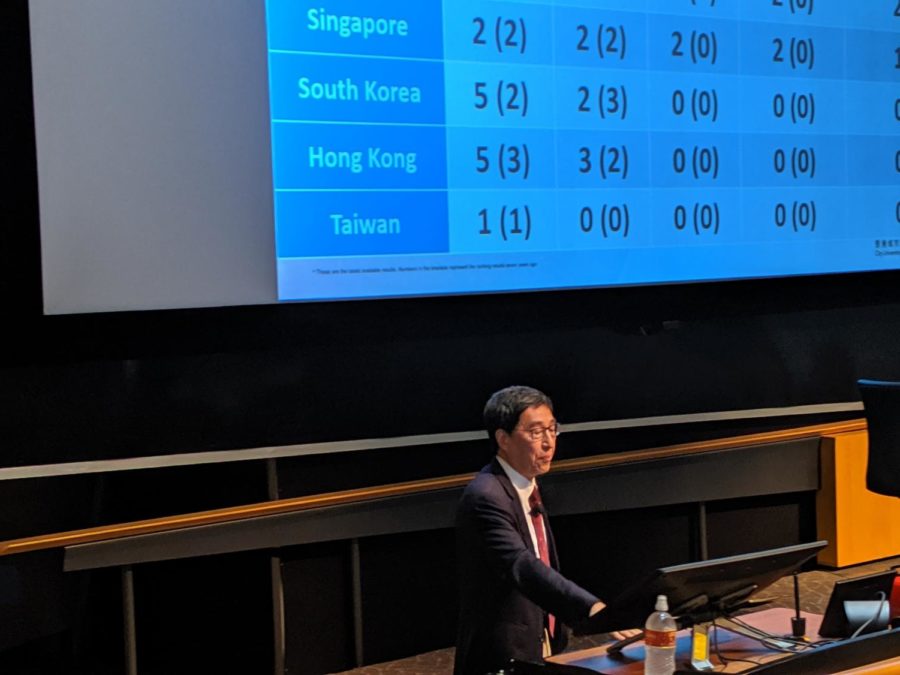Lecturer speaks on higher education around the world
Sebastian Krembuszewski/ Iowa State Daily
Way Kuo, president of City University of Hong Kong, shares his ideas on higher education during his presentation, “Soulware: The American Way in China’s Higher Education,” on Wednesday.
October 2, 2019
Way Kuo gave a presentation Wednesday to discuss the fast growth of higher education around the world and the impacts it has on society.
Kuo holds a doctorate in engineering and is currently president of City University of Hong Kong and a member of the National Academy of Engineering.
Kuo’s lecture, titled “Soulware: The American Way in China’s Higher Education,” is named after his book, which describes the history and challenges within the higher education system in mainland China, Taiwan and Hong Kong.
Many of his key points described the problems in the higher education system of those countries and compared them to those of the U.S.
In terms of students choosing to study internationally, Kuo said although government officials in many ways say they are very proud of their local universities, many of them send children to North America, Europe or Australia to study at ‘cash-strapped colleges’ instead.
Kuo went through the location of the top 100 universities in the world and revealed about half of the universities are in the U.S., China and Taiwan alone. This trend dates back 20 years ago and has shown no signs of changing.
“It is a combination of a lot of different factors in terms of higher education,” Kuo said. “But the U.S. still has the best higher education system in the world, but there is always still room for improvement across the board.”
While speaking about the importance of higher education, Kuo showed how educated CEOs of the biggest companies in the world are. He made note that of the 500 CEOs of the largest companies in U.S and China, only 45 do not have a degree from a higher education.
Kuo then asked the audience how they would make a living or what they would do with their life if they didn’t go to college at all.
An example Kuo presented to the audience was a quote from Tim Cook, the CEO of Apple Inc., who said “the company was founded by a college dropout, and that half of Apple’s U.S. employment last year were people without a traditional 4-year degree.”
“Getting a high degree is a near essential in having a very successful life, especially in the fields of physics, chemistry and medicine,” Kuo said. “What do you think will happen if [you] were to go without higher education?”
The last aspect of Kuo’s presentation was telling everyone how the relationship of U.S. and China’s higher education began.
In 1908, President Theodore Roosevelt issued the Boxer Indemnity Scholarship Program, which opened the door for Chinese students to study at U.S. universities, believing that it can maximize American profits by bridging the two countries together.
“It took a while for Roosevelt to convince and persuade congress to go through with the idea of bringing Chinese students to U.S. campuses,” Kuo said. “But it was because of this — [this] is why you see students come thousands of miles from China to study at schools that might be considered in the middle of nowhere.”

















